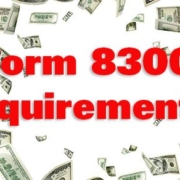Advance Child Tax Credit and EIP Must Be Reconciled on 2021 Return
- Discover the American Rescue Plan’s increased child tax credit.
- Learn about advance child tax credit payments.
- Find out how the IRS will reconcile payments.
- Learn about IRS Letter 6419 and its importance.
- Find out why your refund may not be as expected.
- Learn about unusual CTC circumstances.
- What is Economic Impact Payment Letter 6475?
Early in 2021, Congress passed the American Rescue Plan. This plan included a provision that increased the child tax credit amount and upped the age limit of eligible children. Normally, the credit was $2,000 per eligible child under age 17. For the 2021 tax year, the American Rescue Plan increased the credit to $3,000 for each child under age 18 and to $3,600 for children under age 6 at the end of the year.
The benefit of a tax credit traditionally isn’t available until after the tax return for the year has been filed. However, for 2021, the new tax law included a provision to distribute the credit to taxpayers quickly. It charged the Secretary of the Treasury with establishing an advance payment plan.
Under this mandate, those qualifying for the advance child tax credit would receive monthly payments. Payments equal to 1⁄12 the amount the IRS estimated the taxpayer would receive using the information on the 2020 return started in July. If the 2020 return had not been filed or processed yet by the IRS, the 2019 information was used.
Reconciling the advance child tax credit
However, the IRS only estimated the amount of the advance payments. Some taxpayers may have received too much and others not enough. Thus, on the 2021 tax return, the IRS must reconcile the payments received with the amount each taxpayer is actually entitled to.
Those who received too much may have to repay some portion of the advance credit. Others may be entitled to an additional amount.
To provide taxpayers with the information needed to reconcile the payments, the IRS has begun sending out Letter 6419. This letter is an end-of-year statement that outlines the payments received. It also states the number of qualifying children used by the IRS to determine the advance payments. For those who filed jointly on their prior-year return, each spouse will receive a Letter 6419 showing the advance amount received.
Do not discard the letter(s) from the IRS. You must have it to properly file 2021 returns.

How will the advance child tax credit affect you at tax time?
Having received the advance credit payment, taxpayers will find their refunds will be substantially less than they may have expected. Or they might even end up owing money on their tax return unless their AGI is low enough to qualify for the safe harbor repayment protection for lower-income taxpayers.
In this case, the excess advance repayment is eliminated or reduced.
Example: If a taxpayer received advance child tax credit payments for two children based on the 2020 return, and the taxpayer doesn’t claim both children as dependents in 2021, the taxpayer would need to repay the excess on their return, unless protected by the safe harbor provision.
It is also possible that one taxpayer could have received the advance child tax credit payments based on their 2020 return and not have to make repayment under the safe harbor rule. However, another taxpayer, who can legitimately claim the child, can get the credit on their 2021 tax return. This will happen most often with divorced parents. So, there’s the potential for the child tax credit to be received by both parents.
Economic Impact Payment (EIP) Letter
The IRS began issuing Letter 6475, regarding the third Economic Impact Payment, to EIP recipients in late January. This letter will help EIP recipients determine if they may claim the Recovery Rebate Credit on their 2021 tax returns.
Letter 6475 only applies to the third round of Economic Impact Payments issued starting in March 2021 and continued through December 2021. The third round of EIPs, including the “plus-up” payments, were advance payments of the 2021 Recovery Rebate Credit that would be claimed on a 2021 tax return.
Plus-up payments were additional payments the IRS sent to people who received a third EIP based on a 2019 tax return or information received from the Social Security Administration, Railroad Retirement Board, or Dept. of Veterans Affairs; or to people who may be eligible for a larger amount based on their 2020 tax return.
Most eligible people already received the payments. However, those who are missing stimulus payments should review the information to determine their eligibility and whether they need to claim a Recovery Rebate Credit for tax year 2020 or 2021.
Like the advance CTC letter, the EIP letter includes important information that can help tax preparers quickly and accurately reconcile the Recovery Rebate Credit when preparing 2021 tax returns.
What’s next?
Have questions regarding the Child Tax Credit or the Recovery Rebate Credit and the advance payments of either that you received? Call Fiducial at 1-866-FIDUCIAL or make an appointment at one of our office locations to discuss your situation.
Ready to book an appointment now? Click here. Know someone who might need our services? We love referrals!
For more small business COVID-19 resources, visit Fiducial’s Coronavirus Update Center to find information on SBA loans, tax updates, the Paycheck Protection Program, paid sick and family leave.









